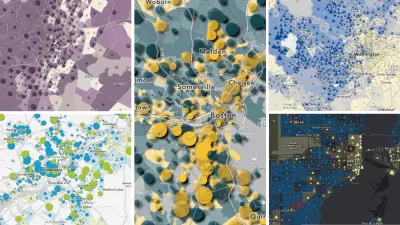Think your living arrangement is unique? You aren't alone. The New York Times parses the vicissitudes and permutations of the twenty-first century American households.
The changing profile of U.S. households portends profound changes in the way people live, work, and play.
"[A]ccording to census data, more households consist of the unmarried than the married," writes columnist N. R. Kleinfield in a supplementary article. He continues, "More people seem to be deciding that the contours of the traditional nuclear family do not work for them, spawning a profusion of cobbled-together networks in need of nomenclature."
What larger societal force accounts for this paradigm shift? Kleinfield offers an abridged explanation: "The double households began because of economics."
FULL STORY: How Many Households Are Like Yours?

Maui's Vacation Rental Debate Turns Ugly
Verbal attacks, misinformation campaigns and fistfights plague a high-stakes debate to convert thousands of vacation rentals into long-term housing.

Planetizen Federal Action Tracker
A weekly monitor of how Trump’s orders and actions are impacting planners and planning in America.

In Urban Planning, AI Prompting Could be the New Design Thinking
Creativity has long been key to great urban design. What if we see AI as our new creative partner?

King County Supportive Housing Program Offers Hope for Unhoused Residents
The county is taking a ‘Housing First’ approach that prioritizes getting people into housing, then offering wraparound supportive services.

Researchers Use AI to Get Clearer Picture of US Housing
Analysts are using artificial intelligence to supercharge their research by allowing them to comb through data faster. Though these AI tools can be error prone, they save time and housing researchers are optimistic about the future.

Making Shared Micromobility More Inclusive
Cities and shared mobility system operators can do more to include people with disabilities in planning and operations, per a new report.
Urban Design for Planners 1: Software Tools
This six-course series explores essential urban design concepts using open source software and equips planners with the tools they need to participate fully in the urban design process.
Planning for Universal Design
Learn the tools for implementing Universal Design in planning regulations.
planning NEXT
Appalachian Highlands Housing Partners
Mpact (founded as Rail~Volution)
City of Camden Redevelopment Agency
City of Astoria
City of Portland
City of Laramie




























